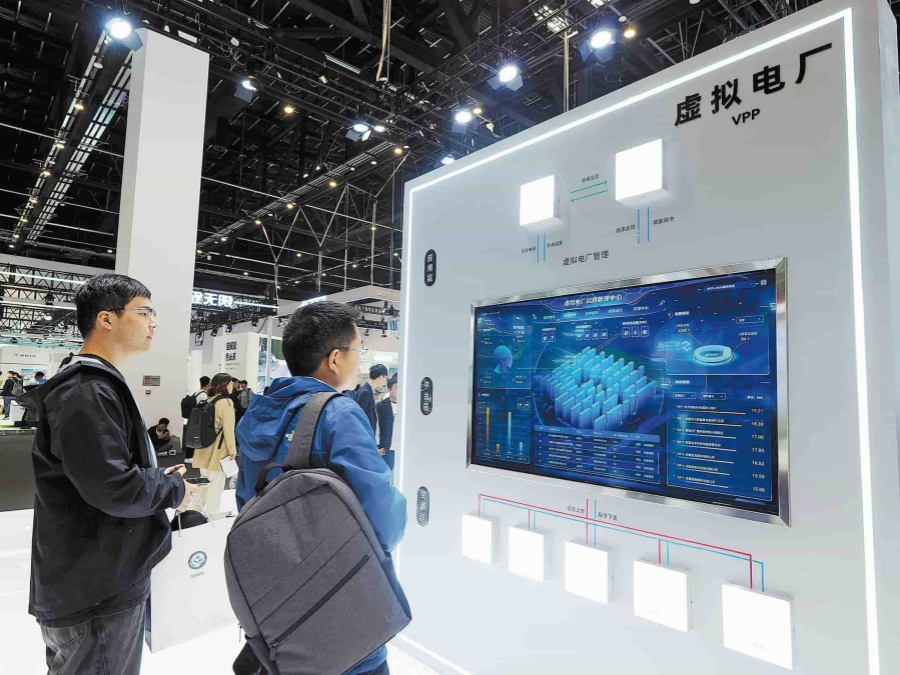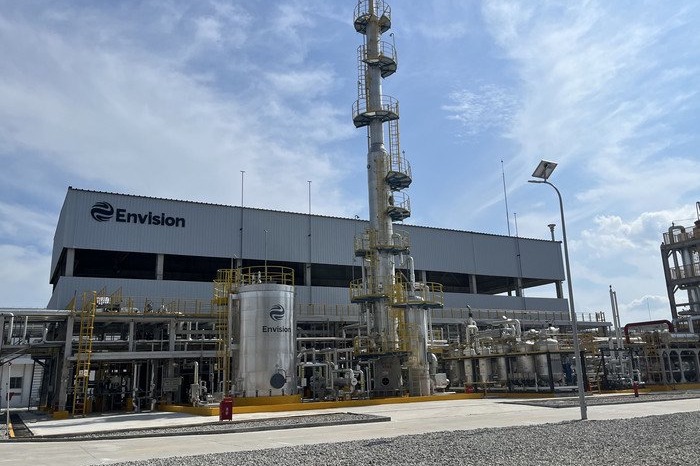Envision wedding green power, AI


Artificial intelligence applications across the entire green energy value chain are playing a pivotal role in advancing green energy transition, companies and experts said.
"Dancing with the Wind" is a slogan representing a core strength of Envision Group's dynamic green production plant in Chifeng, Inner Mongolia autonomous region, the company said.
This enables real-time adjustment of green hydrogen-ammonia production and storage according to wind-solar power fluctuations, with artificial intelligence applications driving cost efficiency and production optimization, said Zhang Jian, chief hydrogen engineer of Envision Group.
The group is a global leader in green technology, establishing over 20 operational headquarters and research and development centers worldwide, and owning more than 60 manufacturing facilities.
Zhang explained that on the production side, the fully dynamic green plant seamlessly synchronizes with variable renewable upstream power supply resources, ensuring every kilowatt-hour of green electricity can be maximally utilized, achieving holistic system stability.
Under traditional operating models, hydrogen storage entails high costs, with the investment in storage infrastructure generating no additional output or production value, said Deng Yunhui, director of Envision Chifeng's hydrogen energy plant.
"Our independently developed AI weather forecasting system converts intermittent solar-wind power into stable, industrial-grade energy," said Lou Yimin, senior vice-president of Envision Group.
Beyond traditional satellite cloud imagery, our AI-powered forecasting system has incorporated imaging sensors and wind speed radars, enhancing prediction accuracy for wind and solar resource fluctuations, said Huang Zhiyong, another senior vice-president of Envision Group.
Regarding smart operations and maintenance, Huang said digital technologies enable maintenance debugging in virtual environments, achieving a 40 percent reduction in overall operation and maintenance costs.
"Our primary consideration for partnering with Envision lies in its technological capability to stabilize intermittent wind and solar power and convert it into green ammonia, driving our selection of Envision as our strategic partner," said Marubeni Corp, a Japanese integrated trading and investment business conglomerate, which has entered into a long-term green ammonia underwriting agreement with Envision.
When it comes to talent cultivation, Deng said the company utilizes AI as an aid to help staff members rapidly access technological updates.
"AI applications can significantly enhance the efficiency of acquiring knowledge and information. In knowledge-intensive industries, AI models can rapidly provide tailored guidance to employees by continuously training AI models with updated databases," Deng said.
At the 13th Energy Storage International Conference and Expo in Beijing in April, multiple energy enterprises showcased AI-integrated energy storage products and solutions — demonstrating AI's expanding role beyond production applications into energy storage in this increasingly vital sector.
Premier Li Qiang designated new-type energy storage as an emerging industry for rapid development in this year's Government Work Report in March, underscoring its vital role as a strategic pillar for China's energy transition.
With new-type energy storage and allied emerging industries enjoying strategic support amid energy transition, multifaceted innovation in storage technologies is required, according to the Government Work Report.
"Energy storage systems fundamentally serve as regulatory mechanisms, balancing supply-demand dynamics, particularly through demand-side flexibility enhancement," said Yu Zhenhua, executive vice-chairman of the China Energy Storage Alliance.
This process entails sophisticated data-algorithm processing, Yu said, and urged broader corporate participation in AI-empowered storage convergence.
"AI applications permeate the entire industry chain," said Yang Lei, deputy dean of the Institute of Energy at Peking University.
Many companies have been utilizing AI simulations to assess development scale and determine equipment quantities tailored to local wind-solar resources, before the launch of projects, Yang said, adding that otherwise, equipment installations would incur significant operational deviations.
AI enables forecasting of wind-solar fluctuations, allowing proactive production preparations, Yang said, adding that for instance, grid power can be preemptively accessed when renewable supply is insufficient during high demand periods. Thus, AI ensures system-wide optimality — maximizing both operational efficiency and economic performance.
"The integration of intelligent solutions and market-driven mechanisms will propel green energy transition with unprecedented momentum," said Yang, noting that this exemplifies the optimization of total factors in new quality productive forces.




































